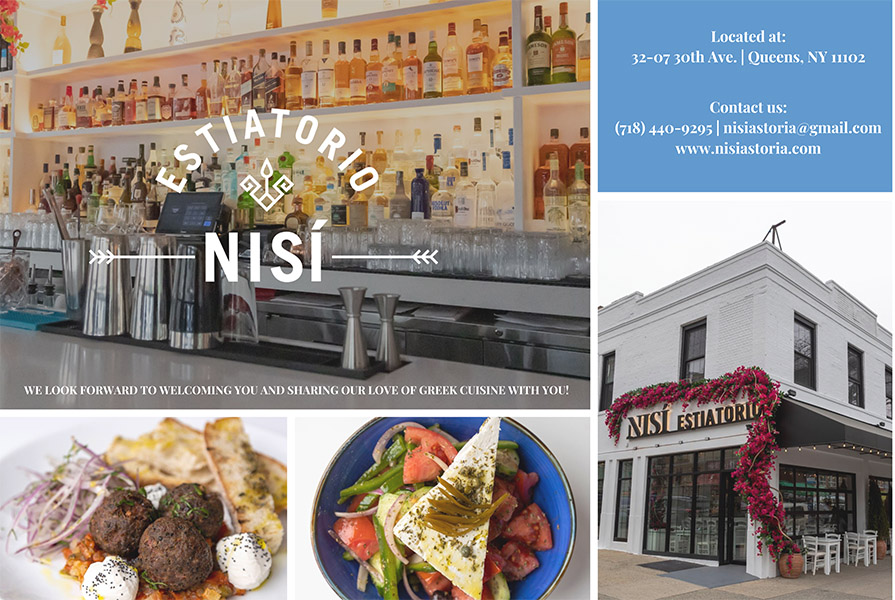
I fell in love with Buenos Aires walking among the people, eating in their cafes, listening to the street performers, wandering into their shops, historic monuments, museums and the wide open countryside. In 1906 the American writer O. Henry said, “You’ve got to get out into the streets, into the crowds, talk with people, and feel the rush and throb of real life.”
In Argentina that’s a lot of streets, and people will welcome you.
From the drama of Tierra del Fuego, the formidable Andes, the profound natural wonders and villages of Patagonia, Iguazu Falls, the Parana Delta, millenniums of archeological splendors in Salta and Jujuy, the energy and soulfulness of the Tango and ancient Andean music, the agricultural wealth of the Pampas, mile high vineyards, the creativity of their cuisine to vibrant Buenos Aires, Argentina throbs.
As the eighth largest nation on Earth, I’m not going to attempt a “top 10” article, but rather lead you on an exploration of its vibrant capital, one of the world’s fabled cities, Buenos Aires.

Buenos Aires has been graced with superlatives during its reign as South America’s leading city: “the Paris of the South,” “the most European city in South America,” “Manhattan in the southern hemisphere.” All of these are justified. But I prefer to interpret its great author and native son Jorge Luis Borges – Buenos Aires itself is a superlative.
The metropolitan area is vast with 14 million people (35% of the entire Argentine population) and nearly as many cars. But to put the city in perspective, its landmass occupies less than 1/10th of 1% of Argentina. It sits at the entrance to one of Earth’s great river deltas formed by the Rio Parana and Rio Uruguay as it creates the vast estuary of the Rio de la Plata.

Buenos Aires is a European city in culture. French style 1890-1930 buildings share space with a 21st century building boom in apartments. Numerous public plazas and sizable green spaces dot the city. People are on the move, just like Manhattan, except they’re as often going to a café, shopping, taking their children and dogs to beautiful green spaces or visiting one of countless museums and architectural attractions as they are heading for a meeting or appointment. Life is not all work.

Portenos (residents of Buenos Aires) are friendly and helpful. Reading a map at an intersection will elicit an offer to help with directions and don’t be surprised if that person goes out of their way to walk you to your destination. Although it is beneficial if you can speak Spanish, or even Italian, language is not a serious issue – although an attempt at any proficiency level is appreciated. Friendly communication is not simply made with words.
The city has a fast subway system, the Subte, which is the oldest in South America dating from 1913. Maintenance on the Subte is good and it continually expands. During weekdays, between 9:00 am to 6:00 pm, it can be exceptionally crowded and guarding the contents of one’s pocket is advised. But the cost of a subway ride is about US fifty cents.
The bus system – colectivos -is extensive and mastering the bus routes demands patience. The larger spiral-bound version of the Guia T (available at newsstands) is excellent if you are staying in the city for an extended time. You can easily learn its cross-referenced schedules, and you will soon figure out how to read the route information on the front of the bus.
The Guia T maps every street in this large city. For short visits, ask your B & B or hotel for assistance, Once you have the system down, you can travel anywhere for about half a US dollar. The buses do speed along as fast as any car down narrow streets as well as the ultra wide boulevards. I’ve yet to see an accident although I’m sure they occur. If you are not traveling at rush hours, you will get to your destination faster than you imagined, and you’ll explore this rich city.

Portenos drive like the Romans – which isn’t surprising since a sizable portion of the population is of southern Italian descent. And like the Romans, there seem to be few accidents or dented cars. Also like Rome, the street system can be difficult to master. Street signs are few and name changes are frequent. A simple compass or smart phone GPS and a good map are a necessity. But as a tourist, don’t even think about renting a car! It’s expensive and not worth the tension.
Taxis are an excellent and affordable alternative and a requirement in the evening – who else will drive you back to your hotel after leaving a club at 4:00 am? Your accommodation, restaurant or club will call a taxi, and it’s advisable that you take advantage of the service during nighttime hours. A few drivers will try to quote you a set fare. Unless you are being transported to or from the airport, this is not legal. Make sure the meter is turned on. Tipping is traditionally “rounding up” the fare to the next peso.

Working hours follow a southern European model. Shops and offices open sometime after 9:00 a.m. Lunch is anytime between 12:00 and 3:00 (at least 1 ½ hour lunch break) when you can expect many shops and most professional offices to be closed. They’ll reopen around 3:00 until 8:00 pm or so. (Do not expect much of anything to be open on a Sunday.) Of course, these time guidelines are just averages in a city as diverse as Buenos Aires.
Except for summer – December through February – the climate is moderate. Summer can be brutal and humid. Many residents leave for the vast stretches of Atlantic seashore or the Delta. Spring and autumn are superb. In winter Buenos Aires nighttime temperatures are not severe – usually in the upper 30’s with daytime in the upper 50’s to upper 60´s. Bougainvillea, impatiens, palm trees, day lilies and even Bird of Paradise flowers flourish in the parks, plazas and balcony gardens even in winter. Many types of trees – especially Australian eucalyptus imported in the late 19th century – do not lose their leaves.

Despite the cars, people walk everywhere. Pedestrian street malls are common in large Argentine cities. In Buenos Aires some stretches of Calle Florida have been car-free since 1913 making it one of the oldest pedestrian thoroughfares in the world today. Car-free Lavalle and other streets contribute to a vibrant shopping and restaurant scene where street performers abound. Unlike many US cities whose experiments in pedestrian malls over the past decades destroyed once vibrant shopping districts, the pedestrian malls in Argentine cities are fashionable and popular.
Buenos Aires architects are masters at adaptive use without destroying historic beauty! Large historic buildings have either been restored or converted into elegant multi-use indoor malls such as the spectacular art deco Abasco Mall (Corrientes 3247), Galerias Pacifico (San Martin 768) and the incomparable El Ateneo Grand Splendid bookstore (Avenida Santa Fe 1860).
Rated in the top ten of the world’s bookstores by England’s Guardian newspaper, the El Ateneo occupies a magnificent 1920s movie palace. Portenos love to shop and dressing well is the norm – “grunge” (even in working class La Boca and among students) is not the style. Despite Argentina having had critical economic fluctuations over the past decades one does not see that in their person.

Perhaps the most charming feature of the city is its districts. Metropolitan Buenos Aires is subdivided into 47 “barrios,” which to Portenos are their hometowns each with distinct features. Working class, and daytime tourist destination, La Boca is the oldest dock district in Buenos Aires, and its central streets are filled with multi-colored houses and folk art. Its outer streets are a mixture of “rural village” and industrial warehouses with a few of the finest restaurants in the city.

San Telmo, home to the once interesting, but now tourist trap, Sunday street fair, has been undergoing gentrification for the past decade. Its once crumbling pre-1870 buildings are being transformed into fashionable apartments and hotels, yet it’s still an affordable home to artists, workers and many of the cities most expensive antique stores. The barrio is also a mecca for Portanos desiring fresh produce, meats and fish. They shop at the century old Mercado de San Telmo, which is definitely worth a visit! (But, unfortunately, do not walk alone in Barrio de San Telmo or La Boca at night.)

Puerto Madero is the newest residential barrio in the city built on reclaimed dock land. It is the hip area for the young professional elite who live in towering modern condos with stunning views of the city, the Rio de la Plata and spend their evenings in chic new clubs.
The Microcentro is the heart of both business and federal politics intersected by grand boulevards lined by Parisian inspired government palaces and office buildings.
Palermo, the city’s largest barrio, has rapidly revived from its mid-20th century decline back to a vibrant, tree lined residential neighborhood. It contains many of the trendiest restaurants, clubs and shops. Exquisite and affordable accommodations in the form of B & Bs and boutique hotels are located on the quiet streets of this beautiful barrio
Recoleta, Retiro and Belgrano, since the late 19th century, have been, and remain today, the most elegant barrios in Buenos Aires. Luxury apartment buildings, palaces, embassies, spacious plazas, cafes, the best museums and expensive shops abound. The Recoleta Cemetery, Calle Junin 1790 (7:00 AM – 6:00 PM, daily, free) is where the wealthy and famous rest in palatial splendor for the afterlife.

The cemetery consists of lavish and imaginative family mausoleums in diverse architectural styles, adorned with bronze and marble sculptures. Once your senses adjust to the serenity it’s possible to gain great insight into the social history of Buenos Aires and the nation. Evita Peron is buried here – and still revered.
The extreme western barrio of Matederos is host to the incomparable Feria de Matederos. Once the meat packing district of Buenos Aires, this barrio on the edge of the Pampas, is host every weekend to the sounds of the best in Argentine music, artisan foods, crafts, antiques and goucho horsemanship. It is a must for any visitor especially since few guide books even mention this treasure!

Poverty is evident, especially on the outskirts of the city. Slums within Buenos Aires are rare. According to UN statistics, the poverty rate is on average with other first world nations. As for personal safety, common sense is the rule and no extraordinary precautions are necessary other than ones taken in any large city.
Each barrio has its personality and residents are fiercely loyal. It will take the casual visitor many months to explore and appreciate their differences, but suffice to say, each district significantly contributes to the vibrancy of life in Buenos Aires.

Recommended hotels:
Mansilla 3935, Calle Mansilla 3935, Palermo Viejo, spacious, moderately priced, friendly family owned accommodations in leafy Palermo. http://www.mansilla3935.com.ar/index_en.html
Alvear Palace Hotel, Avda. Alvear 1891, Recoleta, a luxurious palace – you’ll live like an estancia owner. http://www.alvearpalace.com/eng/
Recommended restaurants:
Restaurant El Obrero, Agustin R. Caffarena 64, La Boca, terrific atmosphere and food. Worth taking a taxi since it’s hard to locate. https://www.tripadvisor.com/Restaurant_Review-g312741-d1012355-Reviews-El_Obrero-Buenos_Aires_Capital_Federal_District.html
Café Tortoni, Ave. de Mayo 825, Microcenter, since the 19th century an institution that lives up to its reputation as an elegant coffee house and cafe. http://www.cafetortoni.com.ar/en/
Restaurant Rodizio, Justo 838, Puerto Madero, an extensive menu of Argentine meats, seafood and imaginative small plates on the Rio de la Plata in trendy Puerto Madero http://www.rodiziomadero.com.ar/
Travel with Pen and Palate every month to Greece and the world in the Hellenic News of America.








